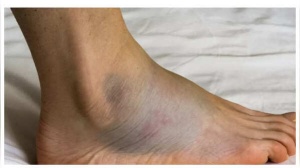Monitoring blood pressure is a vital part of maintaining heart health and preventing cardiovascular complications. Blood pressure is expressed in millimeters of mercury (mm Hg) and consists of two key numbers: systolic and diastolic. These numbers help healthcare professionals categorise your blood pressure into different stages and guide appropriate management strategies.
Blood pressure represents the force your blood exerts on artery walls, and understanding these numbers is crucial for long-term health. In this article, we explain how to read a blood pressure chart, interpret your readings, and manage both high and low blood pressure.
5 Simple ways to bring down high BP
Understanding blood pressure numbers
Understanding blood pressure readings is crucial because high blood pressure (hypertension) is often symptomless but can lead to serious health problems, such as heart attacks, strokes, kidney damage, and vision loss. Measuring your blood pressure is the only reliable way to know your status, and maintaining healthy levels can prevent long-term complications. Know the categories and its meaning in detail.
According to the American Heart Association (AHA) check below what your blood pressure numbers reveal about your health and what each range signifies.
Blood pressure categories and their meaning
Blood Pressure Category
| Systolic (mm Hg)
| Diastolic (mm Hg)
| What It Means
|
Normal
| <120
| <80
| Blood pressure is within a healthy range. Maintain a healthy lifestyle to keep it stable.
|
Elevated
| 120–129
| <80
| Blood pressure is higher than normal but not yet hypertensive. Lifestyle changes like reducing sodium, exercising, and maintaining a healthy weight are recommended.
|
Stage 1 Hypertension
| 130–139
| 80–89
| Indicates early hypertension. A doctor may suggest lifestyle modifications and sometimes medication, especially if there are other health risks.
|
Stage 2 Hypertension
| ≥140
| ≥90
| Moderate to severe hypertension. Treatment usually involves both lifestyle changes and medication to reduce the risk of heart disease and stroke.
|
Severe Hypertension / Hypertensive Crisis
| >180
| >120
| This is a medical emergency if accompanied by symptoms such as chest pain, shortness of breath, back pain, numbness, weakness, vision changes, or difficulty speaking. Immediate medical attention is required.
|
What are systolic vs diastolic numbers in your blood pressure monitor
Systolic (top number): Measures the pressure in your arteries when your heart beats. Higher systolic readings are a key predictor of cardiovascular risk, especially in adults over 50.
Diastolic (bottom number): Measures pressure when your heart rests between beats. Elevated diastolic readings can indicate resistance in smaller arteries and may contribute to long-term heart strain.
Important note: Only one of the two numbers—systolic or diastolic—needs to be elevated for your blood pressure to be classified in a higher-risk category. For example:
- 135/78 mm Hg → Stage 1 Hypertension (systolic is high)
- 118/85 mm Hg → Stage 1 Hypertension (diastolic is high)
Blood pressure categories
Knowing your blood pressure category helps you determine whether your readings are healthy or indicate potential risks.
High blood pressure (Hypertension)
High blood pressure, or hypertension, occurs when one or both blood pressure numbers are elevated above the normal range. According to the American Heart Association (AHA):
Important: Only one number needs to be high to place you in a hypertensive stage. For instance:
- 119/81 mm Hg → Stage 1 Hypertension
- 138/92 mm Hg → Stage 2 Hypertension
High blood pressure often develops silently, so regular monitoring is essential.
Low blood pressure (Hypotension)
Low blood pressure, or hypotension, is typically defined more by symptoms than by numbers. However, the AHA and the NHS consider readings of ≤90/60 mm Hg as hypotensive. Symptoms may include dizziness, fainting, and fatigue.
Blood pressure in children
Unlike adults, children’s blood pressure is not a fixed number. It varies depending on age, sex, and height, making pediatric blood pressure more complex to interpret. Because children are growing, their cardiovascular system changes over time, which affects normal blood pressure ranges.
Early detection of abnormal blood pressure in children is important because hypertension in childhood can persist into adulthood. Untreated high blood pressure in children may lead to:
- Increased risk of heart disease later in life
- Early kidney damage
- Potential neurological complications if severe
How to measure blood pressure
Accurate measurement is key to understanding your blood pressure:
- At a clinic: A doctor can measure your blood pressure during routine checkups.
- At a pharmacy: Many pharmacies provide free blood pressure monitoring stations.
- At home: Home blood pressure monitors are widely available. The AHA recommends automatic upper-arm monitors, which tend to be more accurate than wrist or finger devices.
Tips for home monitoring
- Use an upper-arm automatic monitor: These are more accurate than wrist or finger devices.
- Sit quietly for 5 minutes: Rest before taking a reading.
- Position your arm correctly: The cuff should be at heart level, resting on a table or armrest.
- Take multiple readings: Measure twice per session, with 1-minute intervals between readings.
- Record your results: Keep a blood pressure journal or use a tracking app to share with your doctor.
- Consistent timing: Measure at the same time every day for comparability.
Blood pressure monitoring: Tips for accurate measurement
- Measure at the same time each day.
- Take two readings per sitting, spaced one minute apart.
- Record results in a blood pressure journal and share them with your doctor.
- Regular monitoring helps detect changes early and supports effective management.
How to manage blood pressure
Management depends on whether your readings are high, low, or normal.
Managing high blood pressure
The approach varies based on hypertension stage and underlying health conditions:
- Stage 1 Hypertension: Lifestyle changes may suffice. Medications might be prescribed for those with diabetes, heart disease, or kidney disease.
- Stage 2 Hypertension: Lifestyle modifications plus medications are recommended.
Lifestyle strategies to control high blood pressure
- Eat a heart-healthy diet rich in fruits, vegetables, and whole grains.
- Reduce sodium intake to ≤1,500 mg/day.
- Maintain a healthy weight.
- Exercise regularly.
- Limit alcohol and quit smoking.
- Manage stress through meditation, yoga, or relaxation techniques.
- Take prescribed blood pressure medications consistently.
Managing low blood pressure
Low blood pressure may not require treatment unless symptoms are present. Possible interventions include:
- Increasing salt intake (under doctor supervision).
- Staying well-hydrated.
- Wearing compression stockings to improve circulation.
- Using medications like fludrocortisone to boost blood volume.
Complications of unmanaged blood pressure
Failure to manage blood pressure can lead to severe health consequences:
- Risks of Low Blood Pressure
- Dizziness and fainting
- Injuries from falls
- Heart, brain, or other organ damage
‘I thought it was a stomach pain but…’: 39 year old British man diagnosed with stage 4 bowel cancer; here’s what he missed, symptoms and causes


 5 Overlooked Warning Signs of Colon Cancer: Early Detection Saves Lives
5 Overlooked Warning Signs of Colon Cancer: Early Detection Saves Lives
 Shukla's ISS Arrival Heralds New Era for Indian Space Exploration; Gaganyaan Mission Looms
Shukla's ISS Arrival Heralds New Era for Indian Space Exploration; Gaganyaan Mission Looms
 Vijay Sethupathi Apologizes Amid Controversy Over Son Surya's Film 'Phoenix'; Thalapathy Vijay's Support Revealed
Vijay Sethupathi Apologizes Amid Controversy Over Son Surya's Film 'Phoenix'; Thalapathy Vijay's Support Revealed
 Android Security Alert: Government Warns of Critical Flaws Exposing User Data
Android Security Alert: Government Warns of Critical Flaws Exposing User Data
 Skin Deep: 7 Warning Signs on Your Skin That Could Signal Heart Trouble
Skin Deep: 7 Warning Signs on Your Skin That Could Signal Heart Trouble
 Ashada Gupt Navratri 2025: Dates, Significance, and How to Observe This Hidden Festival
Ashada Gupt Navratri 2025: Dates, Significance, and How to Observe This Hidden Festival
 Smith Eyes Grenada Test Return After Injury Layoff
Smith Eyes Grenada Test Return After Injury Layoff
 Staying Hydrated May Significantly Lower Risk of Heart Failure, New Study Suggests
Staying Hydrated May Significantly Lower Risk of Heart Failure, New Study Suggests
 Moto G54 Price Slashed in India: Check Out the New, Lowered Costs
Moto G54 Price Slashed in India: Check Out the New, Lowered Costs
 Gambhir Sidelines Pant's Twin Tons After India's Test Loss, Emphasizes Team Performance
Gambhir Sidelines Pant's Twin Tons After India's Test Loss, Emphasizes Team Performance